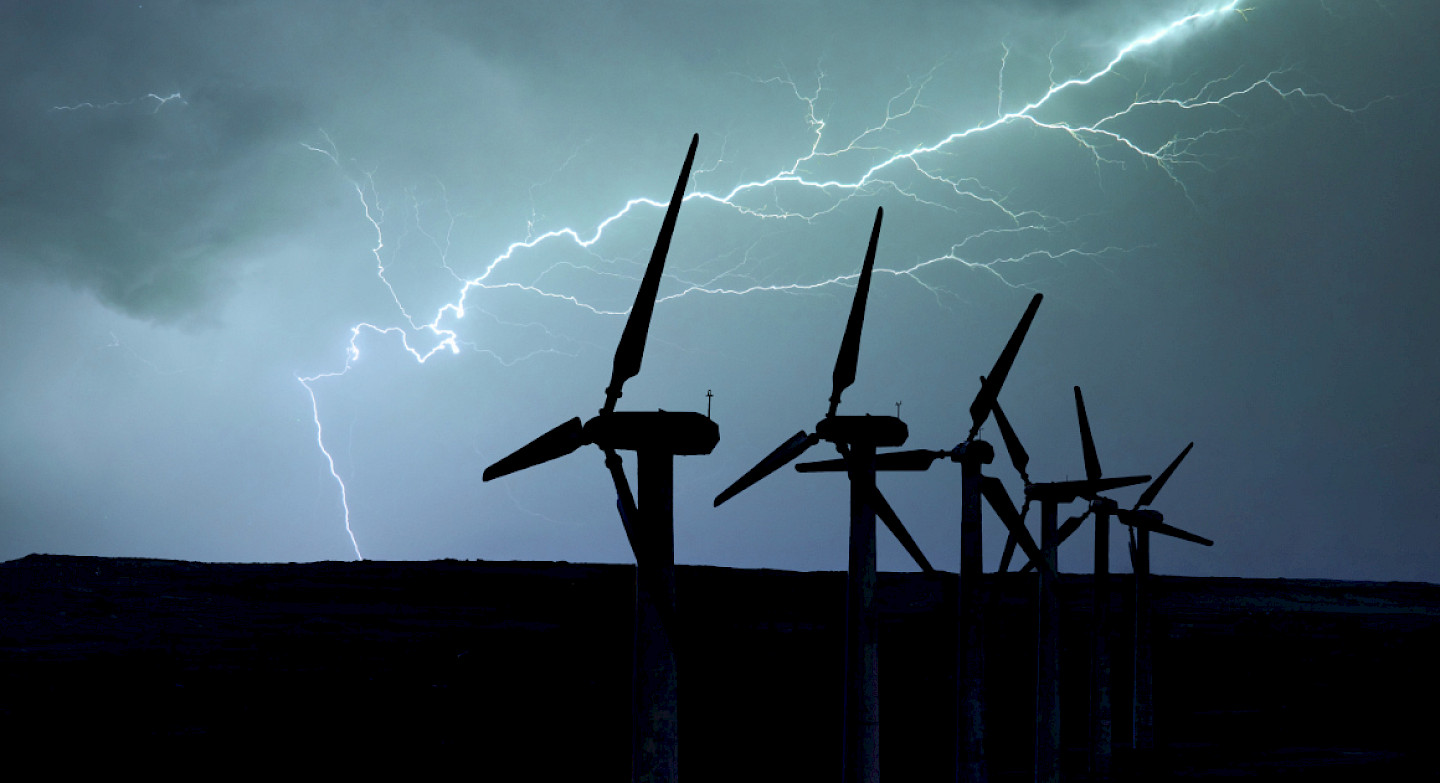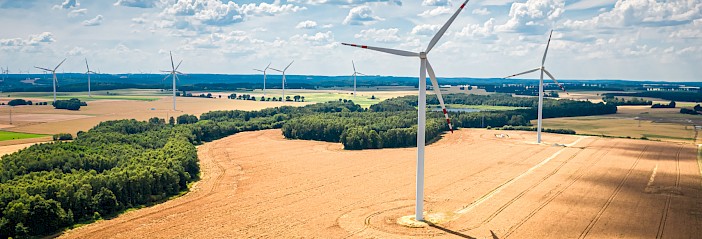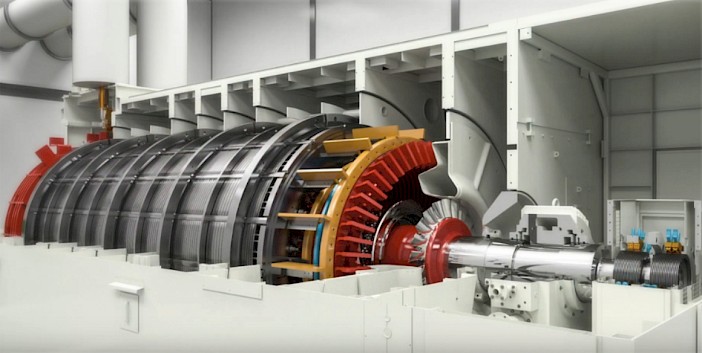Short circuit level and electricity system strength

What is the short circuit level?
The short circuit level (“SCL”) is the amount of current that flows on the electricity system during a fault such as those caused by lightning strikes, other weather conditions or equipment failure. This is also referred to as the “fault current”. When a short-circuit occurs, the voltage at fault point is reduced to zero and current of abnormally high magnitude flows through the network to the point of fault.

System strength is a characteristic of an electrical power system that relates to the size of the change in voltage following a fault or disturbance on the power system
- Australian Energy Market Commission definition of system strength
The short circuit level or “SCL” is used as a description of the strength of the electricity system. When SCL is high the system is said to be “strong” and when the SCL is low the system is said to be “weak”. System strength is a key factor the stability of the grid when a fault occurs – when SCL is low, any voltage changes can cause larger disturbances which travel further through the system. If left unmanaged, these disturbances can trip generation and damage equipment.
If SCL is too low, network protection measures which open circuit breakers to protect the system, could miss that a fault is ongoing, and leave the network in an unsafe and unstable condition. The lower the SCL is, the more likely the system is to experience significant voltage excursions, stability problems, power oscillations, or fault ride through issues following a disturbance.
A power system with low system strength will exhibit one or more of the following:
- Undamped voltage and power oscillations extending over wider areas
- Deeper voltage dips and higher over-voltages (eg transients)
- Reduced generator fault ride-through
- Failure of protection equipment to operate correctly (or at all)
- Longer times to voltage recovery after a disturbance
- Instability of generator / dynamic plant voltage control systems
- Increased harmonic distortions (a by-product of low system strength and higher system impedances).
Large conventional fossil fuel generators generally create five times more fault current than wind and solar generators which are limited by the rating of the power electronic components which connect them to the grid. These inverter-based technologies are limited by the short term converter capability (which is generally limited to 1.5 PU) and do not provide sustained levels of short circuit current in the timescales needed for secure operation. On the Great Britain high voltage grid, protection systems are expected to operate at close to 100-140 ms after a fault. This time requirement can be even longer for the distribution systems. At 100 ms, synchronous generation will still provide sustained short circuit current (of around 3-5 PU), however non-synchronous generation provides almost no short circuit current at this point. Short circuit current levels decay over time – the time taken to decline from the initial peak level is known as the sub-transient period (within 50 ms of the start of the fault).
Impact of inverter-based technologies on electricity grids
Wind and solar PV generation and battery storage systems connect to the grid using power electronics, almost all of which are currently of the “grid-following” inverter type. For these inverters to operate, they must follow the grid voltage waveform seen at their terminals and inject current at an angle that follows the measured voltage. In a process known as a phase-locked-loop, the inverter creates a synchronous clock driven by the voltage phase angle it senses from the grid.
This process is disrupted when there is a fault on the grid because the voltage waveform becomes unstable. After the fault is cleared, the inverter must re-lock onto the grid quickly to ensure stable control. If the system strength is low, the phase angle change between the pre-fault condition to fault clearance will be larger than on stronger systems, making this process significantly more difficult.
If the voltage phase angle detected by an inverter is inaccurate, the current will be injected incorrectly, adversely impacting the voltage waveform of the grid, which in turn increases the current injection error, potentially creating a cascading impact with widespread disruption to the grid if not corrected. Therefore, not only do inverter-based technologies make minimal contribution to system strength, they create additional weakness in the event of a fault.
The more inverter-based devices that are connected in close proximity to each other, the greater the system strength needs to be at that location in order to maintain grid stability, as there is a higher potential for them to influence grid voltage.
The capacity of the existing network in the WMZ to host large scale inverter-connected generation has likely been reached, or will be reached by the time already-committed projects are integrated. New and existing generation across large parts of the WMZ will be materially constrained for significant periods of time pending large-scale network investment. This will not only restrict commercial output, but may prevent or delay completion of commissioning for new projects
- Australian Energy Market Operator (AEMO)
In some areas, such as the West Murray Zone (“WMZ”), which extends across parts of New South Wales and Victoria in Australia, grid strength has become so low that there is no capacity to add new inverter-based technologies to the grid.
How is the SCL changing?

As the energy transition progresses, conventional synchronous generation is increasingly replaced and displaced by non-synchronous intermittent generation which is connected to the grid using inverters. Grids around the world are seeing significant reductions of fossil-fuel generation and even periods when demand is fully met by renewable generation (although not necessarily all intermittent – for example larger hydro-electric power stations tend to be synchronous machines).
Inverter-based renewables contribute very little SCL, reducing the strength and therefore stability of electricity grids, which means the ability of these grids to withstand faults is reduced. Ultimately, the ability to add more inverter-based technologies to the grid will become constrained by the need to maintain grid strength.
Transmission network protection systems rely on the short circuit level to detect faults and know when to operate. The decline in SCL means that protection measures could take longer to operate or not operate as designed, resulting in longer faults that pose a risk to network safety and stability.
Historically, much of the SCL at lower voltage distribution networks has come from the transmission system, but the increase in distributed generation should see an increase in the contribution to maximum short circuit levels within the distribution system. However, studies by National Grid ESO in Great Britain indicate that increasing SCL on the transmission system will be more effective for promoting transmission system stability than increases at the distribution level.
These changes are leading system operators to source additional SCL and grid stability services from other sources, including synchronous condensers.
In 2021, four synchronous condensers were commissioned in South Australia, allowing AEMO to lift the limit on inverter-based generation from 2.0 GW to 2.5 GW, allowing installed renewable generation to operate closer to full capacity (providing that two large synchronous generators are also deployed). Further synchronous condensers are being considered for the Adelaide area.



